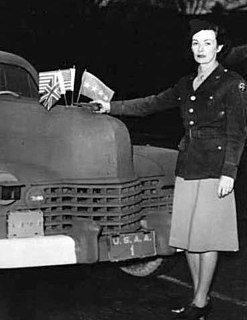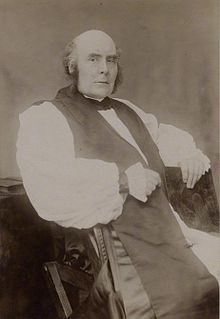
Richard Boyle, 1st Earl of Cork, also known as the Great Earl of Cork, was an English-born politician who served as Lord Treasurer of the Kingdom of Ireland.

Kathleen Helen Summersby, known as Kay Summersby, was a member of the British Mechanised Transport Corps during World War II, who served as a chauffeur and later as personal secretary to Dwight D. Eisenhower during his period as Supreme Commander Allied Expeditionary Force in command of the Allied forces in north west Europe.
Events from the year 1950 in Ireland.
Events from the year 1917 in Ireland.

Harry Boland was an Irish republican politician who served as President of the Irish Republican Brotherhood from 1919 to 1920. He served as a Teachta Dála (TD) from 1918 to 1922.

Terence James MacSwiney was an Irish playwright, author and politician. He was elected as Sinn Féin Lord Mayor of Cork during the Irish War of Independence in 1920. He was arrested by the British Government on charges of sedition and imprisoned in Brixton Prison. His death there in October 1920 after 74 days on hunger strike brought him and the Irish Republican campaign to international attention.
South East Cork, a division of County Cork, was a parliamentary constituency in Ireland, represented in the Parliament of the United Kingdom. From 1885 to 1922 it returned one Member of Parliament (MP) to the House of Commons of the United Kingdom of Great Britain and Ireland.
The Limerick boycott, also known as the Limerick pogrom, was an economic boycott waged against the small Jewish community in Limerick, Ireland, between 1904 and 1906. It was accompanied by assaults, stone throwing and intimidation, which caused many Jews to leave the city. It was instigated in 1904 by a Redemptorist priest, Father John Creagh. According to a report by the Royal Irish Constabulary, five Jewish families left Limerick "owing directly to the agitation" while another 26 families remained.
Events from the year 1870 in Ireland.
Donald Morrogh was an Irish soccer player during the 1890s.
Donal III O'Donovan, The O'Donovan of Clancahill, born before 1584, was the son of Helena de Barry and Donal II O'Donovan, The O'Donovan of Clancahill. From the inauguration of his father in 1584 to the date of his own accession to the chiefship in 1639, the O'Donovan family had risen to become one of the most prominent Gaelic families remaining in all the province of South Munster or Desmond, from a position of semi-obscurity in the mid-16th century, although this was in part due to the misfortunes and sad decline of several once more prominent families, as happens in all ages. Donal II had also been an aggressive seizer of lands during and especially following the Nine Years' War and his son's inheritance, thought to have been approaching 100,000 acres, was colossal for a Gaelic family of the time. His father also living to a great age, Donal III is believed to have been in his late 50s or early 60s when he began his career as Lord of Clancahill. He died in 1660 at the age of 80 or greater.
Redmonds is a Gaelic Athletic Association club based in Cork in County Cork, Ireland. The club is situated in Tower Street, on the southside of the city. The club participates in Cork GAA competitions and in Seandún divisional board competitions. The club no longer fields hurling teams but continues to participate in the Seandun junior C football competitions.

Robert Samuel Gregg MA, DD was a 19th-century Anglican Archbishop.
Henry Jellett was an Irish Anglican priest. He was Dean of St Patrick’s Cathedral, Dublin in the Church of Ireland from 1889 to 1901.
The South East Cork by-election, 1889 was a parliamentary by-election held for the United Kingdom House of Commons constituency of South East Cork on 3 June 1889. The vacancy arose because of the resignation of the sitting member, John Hooper of the Irish Parliamentary Party. Only one candidate was nominated, John Morrogh of the Irish Parliamentary Party, who was elected unopposed.

Dr Charles Kearns Deane Tanner was an Irish surgeon and politician.
The Mid Cork by-election, 1901 was a parliamentary by-election held for the United Kingdom House of Commons constituency of Mid Cork on 17 May 1901. The vacancy arose because of the death of the sitting member, Dr Charles Tanner of the Irish Parliamentary Party.
Hugh Cuffe was an English-born merchant, soldier and landowner in Ireland. Along with his brother Philip Cuffe he took part in the Plantation of Munster in the 1580s that followed the defeat of the Desmond Rebellion. Cuffe was assigned lands at Kilmore in northern County Cork. Cuffe was one of the landowners who lost territory due to legal challenges from local Old English inhabitants who successfully claimed that the land belonged to them. This was a common occurrence at the time as people were able to show they had land wrongly confiscated from them although they had not taken part in the rebellion. The loss of this land led Cuffe to abandon plans to settle large numbers of Dutch settlers on part of his estate.
Sir Francis Slingsby (1569–1651) was an English-born soldier who settled in Ireland following service as an officer during the Nine Years' War. Slingsby married the daughter of Hugh Cuffe, an early settler in the Munster Plantation who held estates in northern County Cork. Slingsby acquired lands at Kilmore through his marriage, and his family were established as prominent figures in Munster.
The Watercourse Distillery was an Irish whiskey distillery which was established in Cork City, Ireland in 1795. In 1867, the distillery was purchased by the Cork Distilleries Company (CDC), in an amalgamation of five Cork distilleries. Following the amalgamation, the distillery was mothballed for a period at the beginning of the 20th century. However, operations at the distillery were later resumed, with production of yeast, industrial alcohol and grain alcohol occurring at the distillery until the 1970s. Distillation ceased at the facility in 1975, when Irish Distillers, who at that stage owned the Watercourse along with several other distilleries in the Republic of Ireland consolidated its operations in a new, purpose-built distillery in Midleton.